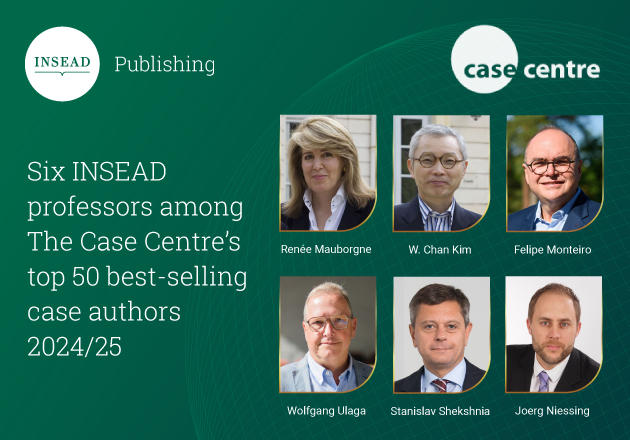
Prizes & Awards
Best Case Study at afm-CCMP Competition 2018
In 2017, the Financial Times ranked INSEAD the #1 MBA programme in the world for the second year in a row. Still, INSEAD’s Dean Ilian Mihov knows that these rankings do not provide a complete picture and he has commissioned a large-scale study to better understand INSEAD’s brand equity compared to its peer schools. His goal is to optimise INSEAD’s value proposition and communication, to attract the best MBA students.
The A case asks students to develop a survey that will measure the strengths and weaknesses of the INSEAD brand compared to its key competitors. Students must choose the performance measures and the relevant competitors. In addition, they must decide on the sample size and composition within the budget constraints. They can also write the full survey instruments.
The B case (both cases can be used independently) provides some of the data from a comprehensive survey conducted by INSEAD of 4,000 GMAT takers who rated 18 business schools. The B case asks students to analyse these data to measure the strength of the INSEAD Brand compared with its competitors, to compare its image to that of its key competitors, to segment students, and to identify the most important attributes when selecting a MBA. They then must use this information to discuss the positioning of the INSEAD brand and to come up with concrete action steps.
1. Brand strategy and brand metrics
1) The case can be used to teach the fundamentals of branding. It illustrates how consumers perceive, evaluate and respond to brands. The case also discusses a step by step approach to building a strong brand.
2) It can also be used to discuss in more detail how different branding concepts like brand identity, brand positioning, brand equity, brand perception as well as brand metrics and brand value work together in a coherent branding strategy.
3) The case could also be used to focus on brand metrics only. Instructors could discuss in more detail how the equity and the value of a brand can be measured in comparison to the competition.
2. Customer intelligence (market research & marketing analytics)
1) Instructors can use the case to discuss how to set up a strategic marketing research project in general and how to manage it accordingly. Within this process questions related to problem definition, research design, data collection, proper survey writing and sampling can be addressed.
2) The case can also be used to discuss in detail the pros and cons of different research designs and research approaches and how these can be linked to the objectives of the research. Instructors could explain when to use exploratory approaches (like observations, focus groups, play-studios, ethnographies, in-depth-interviews), quantitative approaches (from survey research to social media listening) or causal research.
3) The case can also easily fill a 90-min class related to data analytics only. The focus could be on methodologies to better understand what customers care about when making decisions. Several techniques have been used in this project and instructors could for example discuss the pros and cons of stated importance, derived importance (regression modelling), maximum difference scaling and/or more complex discrete choice modelling techniques.
- Business schools
- Strategic market intelligence
- Brand management
- Brand equity analysis
- Brand metrics
- Marketing research
- Data analytics
- Multivariate analyses
- Research design
- INSEAD
- MBA programme
- Q11718







